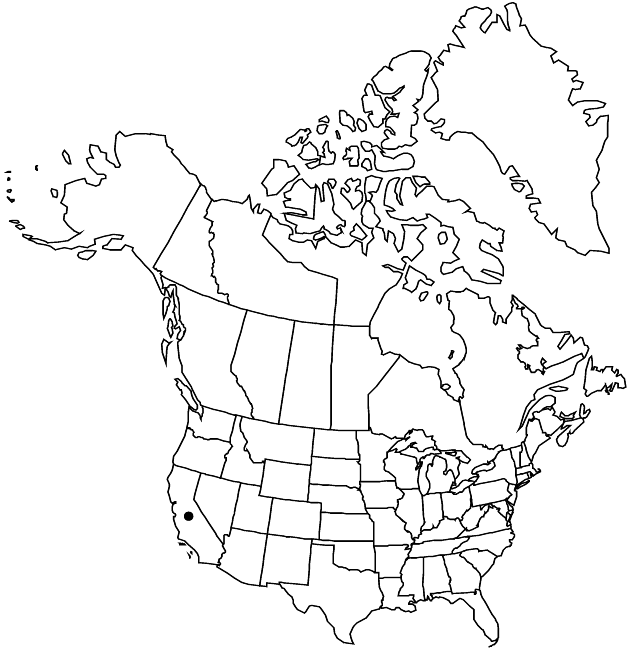Difference between revisions of "Heterotheca shevockii"
Rev. Heterotheca Phyllotheca, 148. 1996.
FNA>Volume Importer |
FNA>Volume Importer |
(No difference)
| |
Revision as of 18:43, 24 September 2019
Perennials, (28–)50–131 cm; taprooted. Stems 1–35+, ascending to erect (sometimes brown proximally, sometimes ± brittle), sparsely strigose, moderately hispid (hairs often broken off in older stems), distally sparsely hispido-strigose and densely stipitate-glandular, abundantly long-hirsute. Leaves: proximal cauline subpetiolate to sessile, blades oblanceolate to lanceolate, 25–55 × 5–16 mm, bases convex-cuneate, margins entire, strigoso-ciliate, proximally long-ciliate, apices acute, mucronate, faces moderately hispido-strigose; distal blades sessile, linear-lanceolate to lanceolate-triangular, (17–)31–65 × 6–15 mm, reduced distally, bases abruptly convex-cuneate or rounded to sometimes subclasping, margins entire, usually revolute, faces sparsely to moderately long-hispido-strigose proximally, moderately to densely stipitate-glandular (branch leaves much reduced distally, linear to linear-oblanceolate). Heads (3–)5–20(–70) in paniculiform arrays, branches elongate on robust shoots. Peduncles 10–60+ mm, sparsely hispido-strigose, densely stipitate-glandular; bracts 3–10, proximal leaflike, greatly reduced distally, linear to linear-oblanceolate, distalmost phyllary-like (not surpassing heads). Involucres cylindro-turbinate to campanulate, 9–13 mm. Phyllaries in 5–6 series, unequal (outer lengths 1/5–1/4 inner), faces sparsely strigose especially along pronounced midnerves, densely stipitate-glandular. Ray florets 9–15(–18); laminae 5–8(–10) × 0.8–2 mm. Disc florets (31–)40–70(–80); corollas barely ampliate, 5–7 mm, tubes and throats sparsely strigose, lobes 0.3–0.8(–1.1) mm, lobes glabrous or sparsely strigose (hairs 0.04–0.27 mm). Cypselae monomorphic, obconic, compressed, 2–4.5 mm, ribs 8–12, faces moderately strigose; pappi off-white, outer of linear scales 0.25–1 mm, inner of 35–45 bristles 5–7 mm, longest weakly clavate (usually equaling or shorther than corollas). 2n = 36.
Phenology: Flowering (Jan–)Aug–Sep(–Nov).
Habitat: Sandy, gravelly soils and rock crevices along river in grass and open xeric pine and oak woods
Elevation: 400–900 m
Discussion
Of conservation concern.
Known only from the lower Kern River Canyon, Kern County, Heterotheca shevockii is distinguished from other species by its usually tall stems and lanceolate-triangular mid cauline leaves with usually revolute margins, its large heads and floral parts, and pappi bristles usually only about 90% the length of the disc corollas at flowering. Smaller plants are similar to H. villosa var. scabra, known in California from a few locations in the Little San Bernardino Mountains (1200–1300 m).
Selected References
None.
